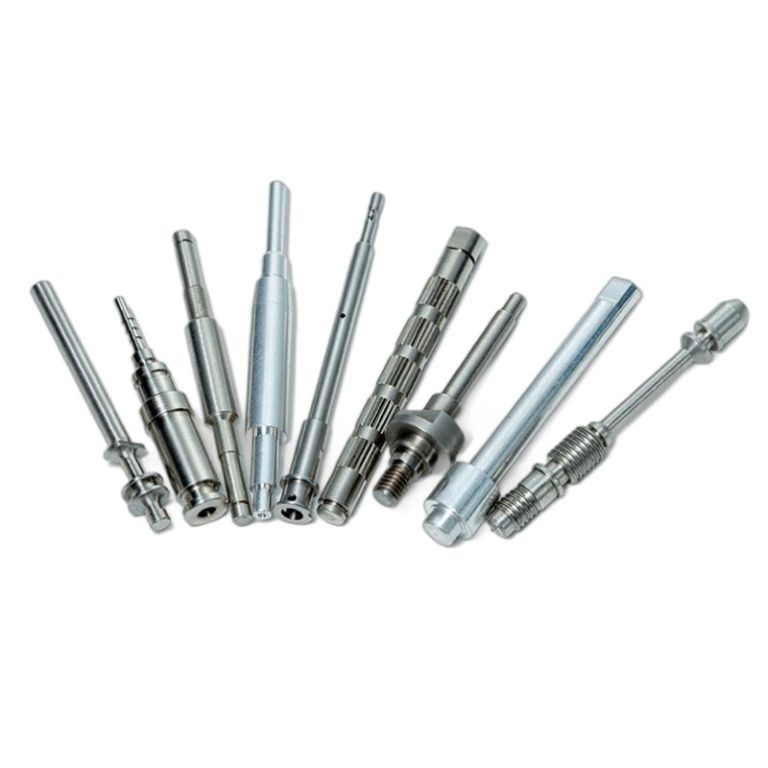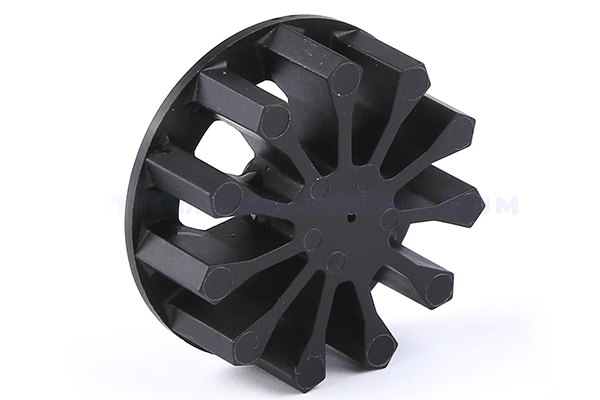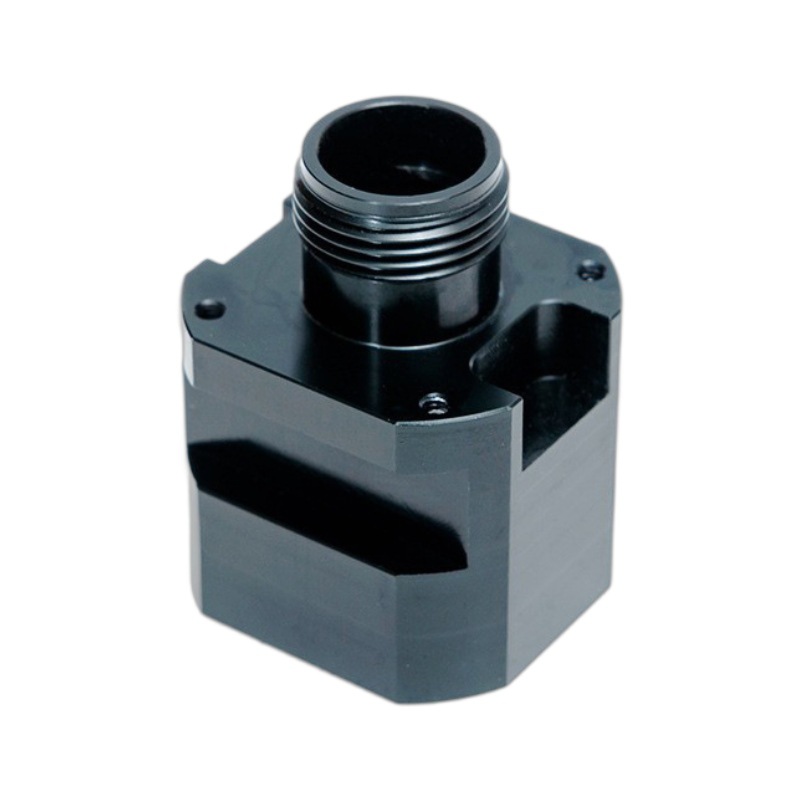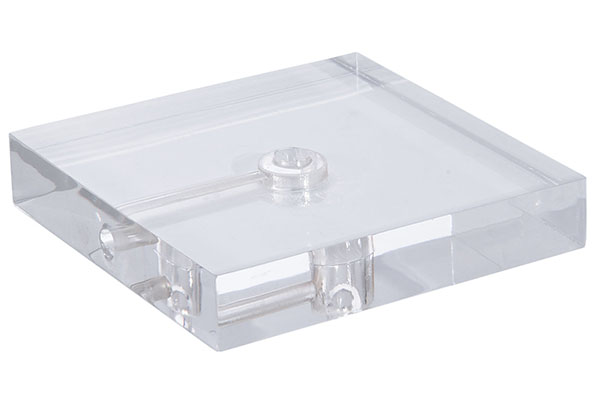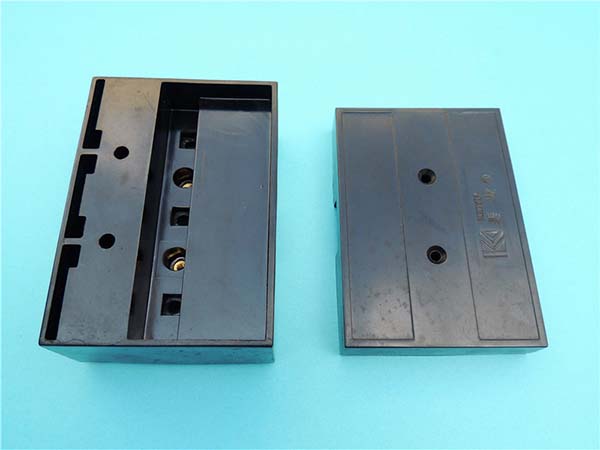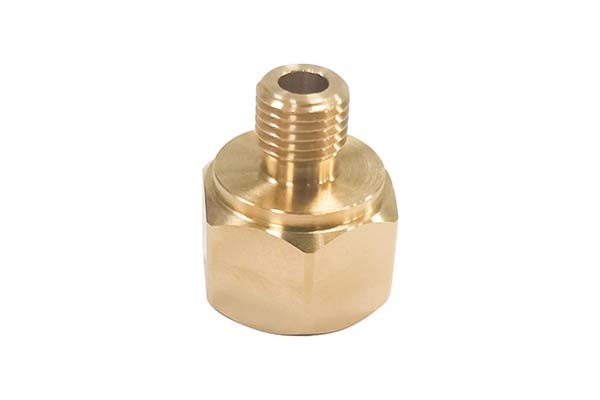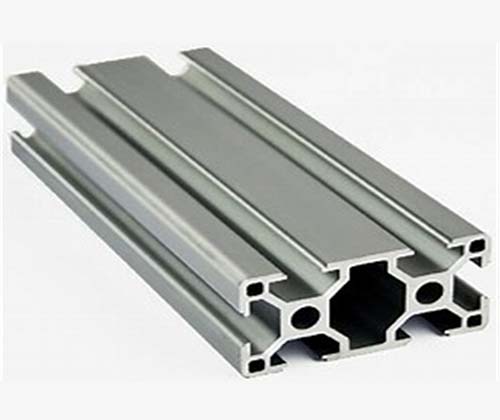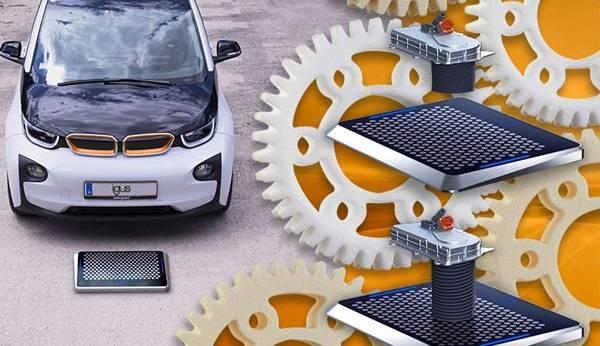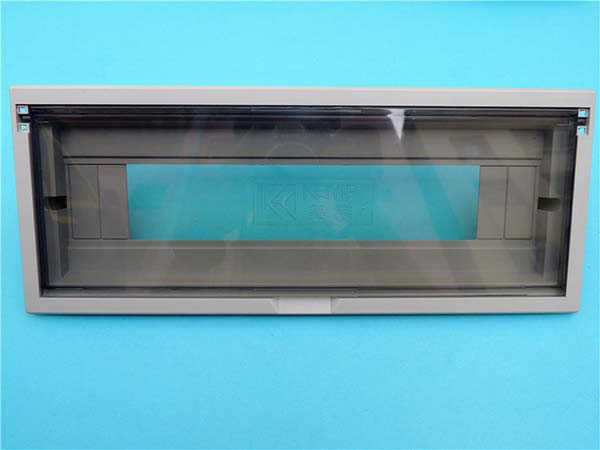The Ideation Genesis: Seeds of Innovation
At Prototype Products Inc, the journey from idea to reality commences with a meticulous and multi-faceted ideation process. This initial stage is crucial as it lays the foundation for all subsequent product development efforts. The company understands that great ideas can sprout from various sources, and thus, it actively explores multiple avenues to unearth innovative concepts.
Market Research: Uncovering Hidden Opportunities
Market research serves as a cornerstone in the ideation process at Prototype Products Inc. By delving deep into market trends, consumer behavior, and industry forecasts, the company gains valuable insights that fuel the generation of new ideas. For instance, in the consumer electronics market, recent research indicates that there is a growing demand for smart home devices that are not only energy - efficient but also seamlessly integrate with existing home automation systems. Prototype Products Inc, through comprehensive market research, identified this trend early on and started brainstorming ideas for a new line of smart plugs. These smart plugs are designed to not only control the power supply to electrical appliances but also monitor energy consumption in real - time, providing users with detailed reports on their energy usage patterns.
Customer - centric Approach: Listening to the Voice of the Customer
Customer feedback and needs are at the heart of Prototype Products Inc's ideation process. The company believes that the best ideas often come from those who will ultimately use the products. To this end, it maintains multiple channels of communication with its customers. Through surveys, focus groups, and direct one - on - one conversations, the company collects a wealth of information about customer pain points, desires, and unmet needs. For Yigu Technology example, in the software - as - a - service (SaaS) industry, many customers expressed frustration with the complexity of onboarding processes for new software applications. In response, Prototype Products Inc came up with the idea of developing a user - friendly onboarding wizard for its new SaaS product. This wizard simplifies the setup process, guiding users step - by - step through the initial configuration, and reducing the time it takes for customers to start using the software effectively.
Employee Innovation: Harnessing the Power of the Team
Prototype Products Inc recognizes the creative potential of its employees. The company fosters a culture of innovation, where employees are encouraged to think outside the box and contribute their ideas. Regular brainstorming sessions, hackathons, and innovation challenges are organized to provide a platform for employees to showcase their creativity. For Yigu Technology example, during one of the hackathons, an employee proposed an innovative idea for a new mobile application feature. This feature, which allows users to customize the app's interface based on their mood, received positive feedback from internal testing. The idea was further developed and implemented in the next version of the app, enhancing user engagement and satisfaction.
Feasibility First: The Litmus Test for Ideas
Once a pool of ideas has been generated, Prototype Products Inc doesn't rush into development. Instead, it subjects each idea to a rigorous feasibility analysis. This step is crucial as it separates the viable concepts from those that may not be practical or profitable. The feasibility analysis at Prototype Products Inc encompasses several key aspects: market demand, technical feasibility, financial feasibility, and resource feasibility.
Market Demand Analysis
Understanding market demand is fundamental to the success of any product. Prototype Products Inc conducts in - depth market research to determine if there is a real need for the proposed product. This includes analyzing the target market size, growth potential, customer needs, and the competitive landscape.
For Yigu Technology example, when considering the development of a new fitness tracking device, the company first looks at the market trends. The global fitness tracking market has been growing steadily, with an increasing number of health - conscious consumers. Prototype Products Inc then analyzes the features that existing products offer and identifies any gaps in the market. Through surveys and interviews with potential customers, they might find that while many fitness trackers focus on basic metrics like steps and heart rate, users are increasingly interested in stress - level monitoring and sleep quality analysis. If the data shows that there is a significant unmet need in this area, the idea for the new fitness tracking device gains more credibility in terms of market demand.
Technical Feasibility
The next aspect is technical feasibility. Prototype Products Inc assesses whether the technology required to bring the idea to life is available, reliable, and cost - effective. This involves evaluating the company's in - house technical capabilities as well as considering external technology partnerships if necessary.
Take the development of a new software application for augmented reality (AR) shopping as an example. The company needs to determine if the current AR technology can support the functions they envision for the application, such as accurate 3D product visualization and seamless integration with e - commerce platforms. They also consider the development time and potential technical challenges. If the technology is still in its infancy and requires a long - term research and development effort to achieve the desired functionality, it may pose a risk to the project's feasibility. However, if the company can leverage existing, proven AR frameworks and has a team with relevant experience, the technical feasibility of the project increases.
Financial Feasibility
Financial feasibility is another critical factor. Prototype Products Inc calculates the costs associated with developing, manufacturing, marketing, and distributing the product. They also estimate the potential revenues and profits over a specific period. This analysis helps in determining whether the project is financially viable and can generate a reasonable return on investment.
For instance, for a new consumer electronics product, the company estimates the costs of research and development, which may include hiring specialized engineers, purchasing equipment, and conducting tests. Manufacturing costs involve raw material procurement, production line setup, and quality control. Marketing costs cover advertising, promotional events, and online marketing campaigns. By comparing these costs with the projected sales volume and price, they can calculate the break - even point and the expected profit margins. If the financial projections show that the product will take a long time to break even or has a high risk of generating losses, the idea may need to be re - evaluated or abandoned.
Resource Feasibility
Finally, Prototype Products Inc examines the resource feasibility. This includes assessing the availability of human resources, such as skilled engineers, designers, and marketers, as well as physical resources like office space, manufacturing facilities, and equipment.
Suppose the company plans to develop a new medical device. They need to ensure that they have a team of medical device engineers, regulatory affairs experts, and quality assurance professionals. Additionally, they must have access to suitable testing facilities and manufacturing equipment that meet the strict regulatory requirements for medical devices. If the necessary resources are not available or would be difficult to obtain, it could impact the project's feasibility.
By conducting a comprehensive feasibility analysis across these areas, Prototype Products Inc can make informed decisions about which ideas are worth pursuing further. This process not only saves time and resources in the long run but also increases the chances of developing products that are successful in the market. After the feasibility analysis, the viable ideas move on to the next stage: concept development, where they start to take a more tangible form.
Real - World Triumphs: Success Stories of Transformation
The true measure of Prototype Products Inc's prowess lies in its real - world success stories. These case studies not only showcase the company's ability to transform ideas into tangible products but also demonstrate the significant impact these products have had on clients' businesses and the market at large.
Case Study 1: Transforming a Niche Idea into a Market - leading Product in the Tech Sector
A client in the tech industry approached Prototype Products Inc with a novel idea for a portable, high - speed data storage device. The concept was to create a device that could store large amounts of data and transfer it at speeds much faster than the existing products in the market. This idea stemmed from the growing need for quick data transfer in industries such as media production, where large - scale video and audio files need to be moved rapidly.
Prototype Products Inc began by conducting in - depth market research to validate the idea. The research showed that while there were existing data storage devices, none could meet the high - speed transfer requirements of the target industries. The technical feasibility analysis revealed that with the use of emerging flash memory technologies and advanced data transfer protocols, the idea was technically viable.
After several months of development, the first prototype was created. It underwent rigorous testing to ensure its performance, durability, and compatibility with various devices. Once the prototype was refined, the product was launched into the market.
The results were remarkable. In the first year of its launch, the product captured 15% of the high - speed data storage device market, which was previously dominated by a few major players. Customer satisfaction surveys showed an impressive 90% satisfaction rate, with customers praising the product's speed, reliability, and compact design. This success not only boosted the client's revenue by 50% but also positioned them as an innovative leader in the data storage industry.
Case Study 2: Solving a Healthcare Problem with an Innovative Medical Device
In the healthcare sector, a medical research institution partnered with Prototype Products Inc to develop a new non - invasive glucose monitoring device. The goal was to provide a more convenient and less painful alternative to the traditional finger - prick method of glucose testing for diabetes patients.
Market demand for such a device was high, as millions of diabetes patients worldwide struggle with the daily discomfort of finger - prick tests. Prototype Products Inc assembled a team of engineers, medical experts, and designers to work on the project. The technical feasibility study involved researching and developing new sensor technologies that could accurately measure glucose levels through the skin.
After multiple iterations and extensive clinical trials, the prototype was transformed into a commercial - ready product. The product was launched in collaboration with a major healthcare company. In the first two years on the market, it was adopted by over 500,000 diabetes patients, leading to a significant improvement in their quality of life. The client, the medical research institution, saw a substantial increase in its reputation and research funding due to the successful development of this innovative device. It also contributed to a 20% reduction in the number of patients reporting discomfort related to glucose testing in the participating healthcare facilities.
Case Study 3: Revitalizing a Traditional Industry with a New - age Product
A client in the furniture industry wanted to introduce smart features to traditional furniture, aiming to create a unique selling point in a highly competitive market. Prototype Products Inc worked with the client to develop a concept for a smart sofa that could adjust its firmness, temperature, and even play music based on the user's preferences.
Market research indicated that there was a growing demand for smart home furniture among younger consumers who valued both comfort and technological innovation. The technical team at Prototype Products Inc integrated advanced sensors, actuators, and wireless connectivity into the sofa design.
Once the product was launched, it quickly gained popularity. In the first year, the client's market share in the smart furniture segment increased by 10%, and customer satisfaction scores rose by 15% compared to their previous non - smart furniture products. The success of this product not only revitalized the client's business but also inspired other furniture manufacturers to explore the integration of smart features in their products.
These success stories highlight how Prototype Products Inc's process of crafting ideas into reality can lead to significant market impact, increased competitiveness, and enhanced customer satisfaction. Each case demonstrates the company's commitment to understanding market needs, leveraging technical expertise, and delivering high - quality products that meet and exceed client expectations.
Charting the Course: A Comparison of Transformation Paths
To truly understand the distinctiveness of Prototype Products Inc in crafting ideas into reality, it's essential to compare its strategies and outcomes with those of other companies in the industry. The following Yigu Technology table presents a side - side comparison, highlighting the key differences in how various companies approach the idea - to - product transformation process.
| Aspect | Prototype Products Inc | Competitor A | Competitor B |
| Ideation Sources | Combines market research, customer feedback, employee innovation, and external collaborations. For example, in developing a new smart home device, they used market research to identify the trend of energy - efficient devices, customer feedback on the need for better integration, employee - proposed features, and external partnerships for the latest sensor technology. | Mainly relies on market research and internal R&D. They analyze market trends and then have their in - house teams come up with ideas. | Depends heavily on competitor analysis. They often try to replicate successful features of competitors' products and add a few unique twists. |
| Feasibility Analysis | Conducts a comprehensive assessment of market demand, technical feasibility, financial feasibility, and resource feasibility. In the case of a new medical device, they studied the market size of diabetes patients in need of non - invasive glucose monitoring, evaluated the technical viability of new sensor technologies, calculated the costs of R&D, production, and marketing, and ensured they had the right medical and engineering talent. | Focuses more on technical and financial feasibility. They may overlook market demand in some cases or not fully consider resource limitations. | Tends to prioritize market demand but may not thoroughly analyze technical and financial aspects, leading to products that are difficult to produce profitably. |
| Concept Development | Emphasizes user - centered design and iterative improvement. They create multiple concept sketches and prototypes, and gather user feedback at each stage to refine the concept. For a new software application, they would create wireframes, then low - fidelity prototypes, and finally high - fidelity prototypes, each time incorporating user suggestions. | Has a more linear concept development process. They create a concept based on initial research and then move forward without much room for mid - course corrections. | Often rushes through concept development, resulting in products with unclear value propositions. |
| Prototyping | Builds high - quality, functional prototypes quickly. They use advanced 3D printing and rapid prototyping technologies to bring concepts to life. For a new consumer electronics product, they can create a working prototype within a few weeks. | Prototyping is a slow process, often due to complex internal approval processes. It may take months to get a basic prototype. | Creates low - quality prototypes that may not accurately represent the final product, leading to misinterpretations during testing. |
| Testing and Validation | Conducts extensive user testing, beta testing, and market testing. They involve a diverse group of users in the testing process to ensure the product meets a wide range of needs. For a new fitness tracking device, they would test with athletes, casual fitness enthusiasts, and people with different fitness goals. | Relies mainly on internal testing, which may not fully account for real - world user scenarios. | Skips some important testing phases, leading to products with high failure rates in the market. |
| Time to Market | Can bring products to market relatively quickly, often within 6 - 12 months for well - defined projects. Their efficient processes and cross - functional teams enable them to move from idea to market in a timely manner. | Takes a longer time, usually 12 - 18 months, due to inefficiencies in the development process and lack of streamlined communication between departments. | Faces significant delays, sometimes taking over 18 months to launch a product, which can result in missed market opportunities. |
| Success Rate of Product Launches | Has a high success rate, with around 80% of its product launches achieving or exceeding initial sales targets. This is due to their thorough processes and attention to detail. | Has a moderate success rate, around 50 - 60%, as some products fail to meet market expectations or face production issues. | Has a low success rate, approximately 30 - 40%, mainly because of insufficient market research and poor product development strategies. |
From the Yigu Technology table above, it's clear that Prototype Products Inc stands out in its comprehensive and well - balanced approach to transforming ideas into reality. By leveraging multiple ideation sources, conducting in - depth feasibility analyses, and emphasizing user - centered design and testing, the company is better equipped to develop products that are not only innovative but also successful in the market. This approach not only benefits Prototype Products Inc but also sets a high standard for the industry, demonstrating what can be achieved when the entire product development process is carefully crafted and executed.
FAQ
How does Prototype Products Inc generate innovative ideas?
Prototype Products Inc generates innovative ideas through a combination of methods. Market research is a significant source, where the company studies market trends, consumer behavior, and industry forecasts. For example, they analyzed the growing demand for energy - efficient smart home devices and used this insight to brainstorm ideas for new products. Customer feedback is also crucial. By actively listening to customers through surveys, focus groups, and direct conversations, they identify pain points and unmet needs, which serve as inspiration for new ideas. Additionally, the company encourages its employees to be creative. Regular brainstorming sessions, hackathons, and innovation challenges provide a platform for employees to contribute their ideas. Finally, external collaborations with industry experts, research institutions, and technology partners bring in fresh perspectives and the latest research, further fueling the ideation process.
The iterative improvement process at Prototype Products Inc begins with creating an initial concept or prototype. This is then subjected to various forms of testing, including user testing, beta testing, and market testing. For example, in the development of a new software application, they create wireframes and low - fidelity prototypes early on. User feedback is collected at each stage, which could be in the form of usability issues, feature requests, or design suggestions. Based on this feedback, the concept or prototype is refined. Multiple iterations are carried out, with each cycle focusing on enhancing the product's functionality, usability, and overall value. This continuous monitoring and improvement process ensures that the final product meets or exceeds customer expectations and is well - positioned in the market.
